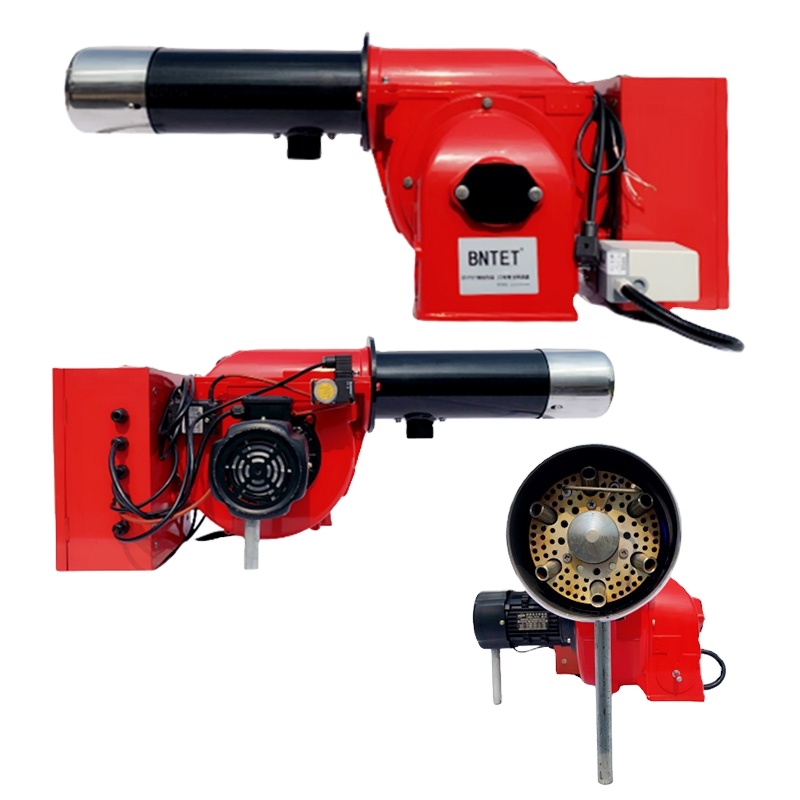Precautions for the use and debugging natural gas LPG city gas burners

In real life, gas burners can be roughly divided into natural gas burners, liquefied petroleum gas burners, city gas burners and other combustible gas burners. The fuel of these burners is flammable, explosive and dangerous gas. Attention should be paid to protection and prevention during storage and storage, otherwise major safety accidents will occur. regret but too late. In order to ensure safe commissioning operations, the gas burner operating standards are specially formulated:
1. The three aspects should be checked before the commissioning of the gas engine:
1. Check whether the gas is in place, whether the gas pipeline is clean and unobstructed, and whether the valve is open.
2. Whether there is pipeline leakage, and whether the pipeline installation is reasonable.
3. Bleed air from the pipeline in front of the gas valve to ensure that there is no mixed air in the pipeline. At the same time, the exhaust pipe should be connected to the outdoors.
2. The internal inspection of gas burners is also very important. Three points are summarized below:
1. First check: whether the combustion head of the burner is installed and adjusted properly.
2. Whether the direction of motor rotation is correct.
3. Whether the external circuit connection meets the requirements.
4. Perform a cold simulation of the burner according to the line conditions, and observe whether the various parts of the equipment are normal and whether the flame detection protection part is normal.
3. Debugging of gas burners
1. Check whether the external gas is in place, the pipeline is unobstructed, and the external power supply is in place.
2. Adjust the load of the burner to a small load, and adjust the ignition position to a small load accordingly. Turn off the large load to ignite and observe the flame condition. Adjust the servo motor or the air damper and gas valve group according to the flame condition.
3. When adjusting the high fire output of the burner, it is necessary to gradually adjust the load from a relatively small load to a large load according to the load of the heating equipment, and adjust the servo motor or the damper accordingly according to the situation.
4. Observe whether the flame has partial fire, insufficient flame burning, vibration and other phenomena.
5. After the adjustment, it is necessary to perform multiple ignitions to observe whether the ignition is good.
4. On-site requirements for gas burners:
1. Personnel unrelated to the commissioning operation are required to leave the job site.
2. Any other operations (such as electric welding, gas cutting, etc.) are prohibited.
3. In order to ensure the personal safety of the commissioning personnel, when the burner is ignited, the burner should be 1 meter away from the side of the burner. When the flame is stable, the flame can be observed in the observation mirror, and the next output adjustment and other adjustments can be made.
5. Precautions for gas burner debugging and maintenance:
(1). When the gas burner fails to re-ignite continuously, it should be shut down to check whether the gas supply system of the burner is normal and the circuit connection is correct. The burner can only be restarted after the fault is resolved.
(2). It is strictly forbidden to knock or rub the gas supply pipeline with a wrench or a metal rod to avoid static electricity or sparks and gas explosions.
(3). Smoking, welding, cutting and other illegal operations are strictly prohibited in the air supply valve group or the flange surface of the pipeline.
(4). It is strictly forbidden to conduct any open flame test near the pipeline, valve block and pressure regulating valve to avoid major accidents.
(5). Test whether there is fuel in the gas supply pipeline, usually with a gas low pressure meter.
(6). In the gas supply pipeline, it has been evacuated, but there are residual gas or liquid droplets on the pipe wall. If it encounters static sparks and open flames, it will also cause combustion and explosion.
(7). When the gas supply pipeline has been ventilated and the valve group is faulty, it needs to be disassembled. First, the front main valve of the valve group must be cut off, and then the gas in the pipeline from the main valve to the valve group can be vented before the valve group can be disassembled and repaired.
(8). In the commissioning work, gas must be serious, safe and efficient.
(9). It is forbidden to use non-explosion-proof electric power tools on site.
(10). Before using the VPS504 leak detection device, you must check the valve cover.
(11). It is recommended to use the VPS504 leak detection device for burners of 600,000 kcal and above. If the user does not match it, the customer is responsible for the accident caused by it.
(12). Before starting the burner, you must perform a gas supply pressure test to check for leaks. After confirming that it is normal, perform simulation operation.
(13). Explain in detail the precautions for safe operation to customers.
(14). When the burner is not in use, inform the customer to cut off the main gas supply valve and the main power supply switch.
(15). It is recommended not to debug the gas engine at night.
(16). At the end of the commissioning, organize the operators to train them in the direction of use and operation, and establish an operation process if necessary
The above are just some common methods and matters, and specific matters should be resolved according to specific methods.